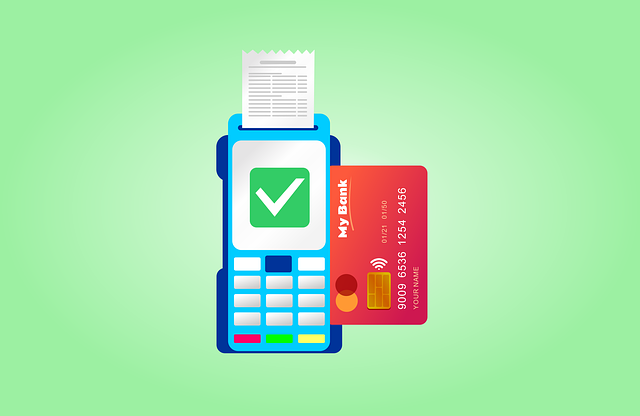Invoice financing offers businesses a unique, fast-track funding option using outstanding invoices as security. It provides quick access to capital with minimal collateral requirements, flexible repayment structures tied to customer payments, and often lower interest rates than traditional loans. Ideal for small businesses or those with unpredictable cash flow, it leverages existing sales data. However, drawbacks include higher fees, rates, and potential strain from late payments. Businesses should carefully evaluate their financial health, understand the application process, and explore various invoice financing providers to secure the best fit for their needs.
In today’s dynamic business landscape, understanding the costs and benefits of invoice financing is crucial. This article delves into the multifaceted world of invoice financing, offering insights that can unlock cash flow opportunities while fostering growth and stability. We explore the advantages, compare it with traditional loans, outline the step-by-step process, and weigh the pros and cons to guide businesses through this alternative financing method. By considering invoice financing providers and their mechanisms, business owners can make informed decisions, enhancing their financial strategies.
- Invoice Financing Benefits: Unlocking Cash Flow Opportunities
- – Exploring the advantages for businesses
- – How it can drive growth and stability
- Invoice Financing vs Loans: Deconstructing the Alternatives
Invoice Financing Benefits: Unlocking Cash Flow Opportunities

Invoice financing offers a unique opportunity for businesses to unlock their cash flow potential. Unlike traditional loans that rely on fixed assets as collateral, invoice financing allows businesses to use outstanding invoices as security. This means businesses can access working capital immediately, enabling them to fund operations, expand, or seize market opportunities without the constraints of lengthy approval processes or rigid repayment schedules.
When considering how invoice financing works, it’s essential to understand both its advantages and potential drawbacks. The pros include faster access to funds compared to loans, as well as no personal guarantees required from business owners (in many cases). Invoice financing providers take on the risk of collecting the invoices, which can be a significant advantage for cash-flow challenged businesses. However, higher interest rates and fees are often associated with invoice financing compared to conventional loans, and late payments can impact cash flow negatively. Applying for invoice financing involves demonstrating a healthy customer base with consistent invoicing practices, making it an attractive option for businesses with strong receivables.
– Exploring the advantages for businesses

Many businesses, especially those in need of quick cash flow to fund operations or growth, find themselves drawn to invoice financing as an alternative to traditional loans. Understanding the advantages of this funding method can help entrepreneurs make informed decisions. Invoice financing benefits include accessing immediate funds against outstanding invoices, providing a flexible repayment structure tied to customer payments, and often lower interest rates compared to bank loans. This method is particularly appealing for small businesses or those with uneven cash flow cycles as it leverages existing sales data without the need for collateral.
Compared to conventional loans, invoice financing offers distinct advantages. It provides a more direct link between sales and funding, ensuring that repayment aligns with actual cash collection. This feature can be a game-changer for companies looking to avoid the burden of fixed repayments regardless of their sales performance. However, it’s crucial to weigh these pros against potential cons, such as higher fees and rates charged by invoice financing providers. Before applying, businesses should carefully evaluate their financial situation, understand the application process, and explore various invoice financing providers to find the best fit for their needs.
– How it can drive growth and stability

Invoice financing can be a powerful tool to drive business growth and stability by providing a flexible funding solution. It works by allowing businesses to sell their outstanding invoices (i.e., accounts receivable) to a third-party provider at a discount, effectively accessing cash flow immediately. This approach offers several benefits over traditional loans. Unlike bank loans that often require collateral and strict repayment schedules, invoice financing is non-intrusive, focusing solely on the value of the invoices themselves. It provides businesses with much-needed capital to fund operations, expand into new markets, or invest in growth opportunities without the burden of long-term debt.
When considering invoice financing, it’s essential to weigh the pros and cons. On the positive side, it offers faster access to funds, reduces administrative tasks associated with managing loans, and can improve cash flow management. However, there are also drawbacks, such as higher interest rates compared to conventional loans due to the shorter term and higher risk for providers. Additionally, businesses must ensure they have a steady stream of invoices to maintain consistent funding. Applying for invoice financing is typically straightforward, involving the submission of business details, financial records, and outstanding invoice data to various provider options available in the market. Businesses can choose from a range of providers, each offering tailored solutions to meet different needs.
Invoice Financing vs Loans: Deconstructing the Alternatives

Invoice financing and traditional loans are two distinct financial options with different implications for businesses. Invoice financing involves using outstanding invoices as collateral to secure immediate cash flow, while loans rely on a variety of assets or personal guarantees. Understanding these alternatives is crucial when navigating capital requirements.
How invoice financing works is by providing businesses with a line of credit based on their outstanding invoices. This method offers several benefits, including faster access to funds compared to loans, no need for collateral beyond invoices, and the ability to maintain control over accounts receivable. However, it also comes with pros and cons; interest rates can be higher, and late payments or defaulting clients can lead to significant financial strain. Applying for invoice financing is typically a straightforward process, with many providers offering online platforms for ease of use. When deciding between invoice financing vs loans, businesses should consider their cash flow needs, risk tolerance, and long-term financial goals when choosing the most suitable option from various invoice financing providers.






